So, you’ve bought a couple of tins of caviar, opened one of them for dinner, and now you’re wondering what to do. Considering you’ve already read our guide on How to Serve caviar, you’re left asking: How should you eat caviar? How can you taste all that brininess, creaminess, and nuttiness promised by the description of caviar? Here’s some information on how to eat caviar properly, including general and essential tips on how to get the most out of this product’s taste, how to distinguish between types, and how to appreciate its flavor.
Useful Tips for All Caviar Eaters
BEFORE OPENING
Before you open the jar or tin, decide how you want to serve your caviar, specifically, do you want to serve it on its own or paired with other foods? While you’re making this deliberate decision, make sure the jar or tin of caviar is in the fridge. Unlike other food products, caviar should be served chilled and not at room temperature.
After you make your decision, prepare the tableware and pairings. Remember that if you’re going to enjoy caviar as is, without accompaniments, you need a bowl of crushed ice or an ice pack. You should sit the bowl with caviar on ice to keep the caviar completely cool during your caviar service.
When everything is ready, wash your hands. Make sure the kitchenware and tableware you’re using is absolutely clean. Now, you can open the jar or tin and begin serving the caviar.
CHOOSE PROPER TABLEWARE
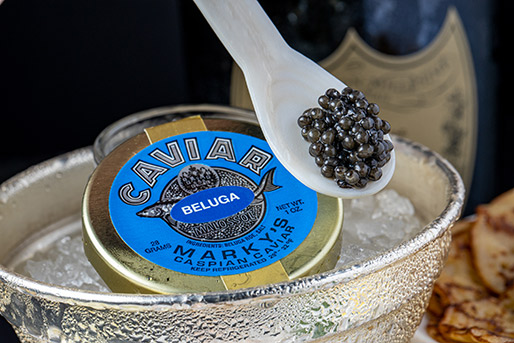

Whether you’re serving caviar in a glass bowl, inside crepes, or on buckwheat pancakes, you should never opt for metal or wooden tableware. Caviar beads absorb the strong flavors of steel, silver, and wood via oxidation, just as they absorb salt in the process of salting roe. So, if you want to taste the natural brininess and butteriness of caviar, choose mother of pearl spoons. Mother of pearl is a natural material that doesn’t impart a taste on the pure caviar flavor. Mother of pearl (MOP) utensils are also affordable and last throughout multiple uses. However, it is recommended that you hand wash the MOP utensils rather than dishwashing them after their use. As the name implies, mother of pearl is produced by mollusks that form an inner-shell layer to protect themselves from outside threats. You can find a collection of high-quality caviar tableware at Marky’s online store.
OFF THE HAND OR WITH A SPOON?
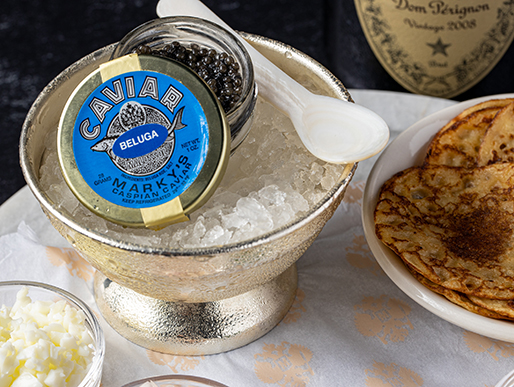

Even if you decided to pair caviar with other foods, there’s an unspoken rule to try a little bit of caviar on its own before mixing it with other foods.
Sure, you can eat caviar by serving it from a mother of pearl spoon. But, there’s one more way to enjoy caviar that you’ll probably find more interesting. Specifically, you can eat caviar off of your hand. To do so, spoon some caviar onto the back of your hand, between your thumb and index finger. Caviar aficionados believe this is the best way to try the first bite of caviar in order to appreciate its simplicity and subtle nuances. This is because clean skin doesn’t give any additional flavor to the delicacy, so you can enjoy it in its purest form.
GARNISH THE CAVIAR
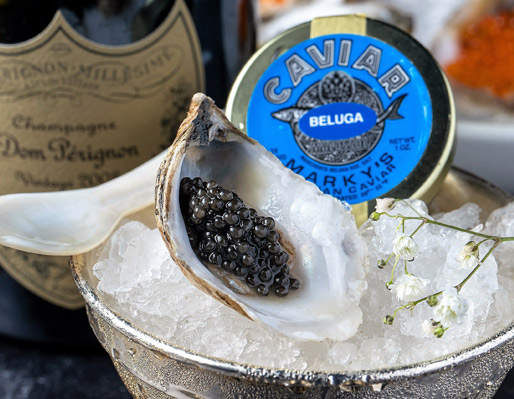

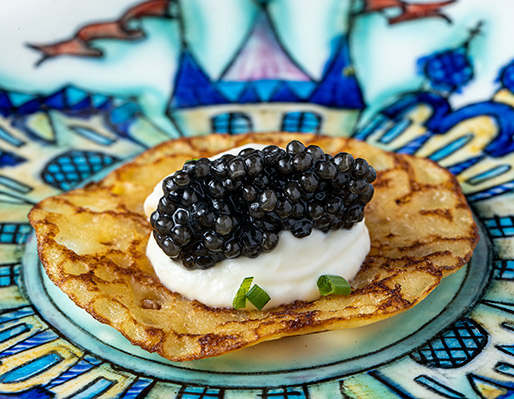

If you’re going to pair caviar with other foods, choose the ones that don’t have strong, overwhelming aromas and tastes. The pairing must highlight the natural flavor of caviar without competing for your taste.
Traditional garnishes will almost always improve your caviar-eating experience. Creme fraiche, sour cream, hard-boiled eggs, chopped onions, and fresh herbs like parsley and dill are common garnishes that can enhance the taste of the caviar you’re eating.
However, there are other options. Here’s a complete list of a few sumptuous matches for caviar. Choose yours, please your taste buds, and surprise your loved ones and guests with delicious combinations.
- Blinis topped with a dollop of crème fraîche and caviar, rolled into thin tubes.
- Generously buttered toast points topped with caviar.
- Bread with fennel seeds and vinegar or traditional Jewish rye bread with a dot of sour cream and a few dots of caviar.
- Chopped red onions, boiled eggs, and toasts or crackers. Separate the yolks from the whites and crush them in different bowls. Combine a few or all of your toppings onto your toast points and top with caviar.
- Chopped chives, sliced pickles, and a boiled potato with butter. Let the potato cool, and top it with the caviar as soon as you serve it on the table. This will ensure the heat of the potato does not ruin the delicate texture of the caviar beads.
- Just a small plate of lemon slices with caviar. Eat caviar on its own, present it with lemon slices.
For alcoholic beverages, the classic pairing to caviar is Champagne or Vodka. But, you can also opt for a sparkling wine like Prosecco or a dry white wine like Sauvignon Blanc or Pinot Grigio. Note other, more specific beverage pairing options mentioned within our How to Serve Caviar guide.
Appearance and Taste Differences


Beluga Caviar: Beluga is one of the most expensive and rare species of sturgeon that lives in the Caspian Sea. Containing the highest nutritional value, Beluga caviar is highly appreciated by gourmets. The aroma it gives off is elegant and rich, practically fully lacking a fishy odor, and the taste denotes hints of hazelnut. The large fish eggs of Beluga sturgeon (~2.5 mm in diameter) literally melt in your mouth. This caviar perfectly pairs with champagne or heavily chilled vodka.
Tip: There’s a category of evaluation of Beluga caviar according to its color. 0 = dark, 00 = a medium-dark color, and 000 = a light, usually pearl-gray color. Although this criterion is not a guarantee of the caviar’s true taste, experts continue to insist that the best Beluga caviar belongs to the 000 category.
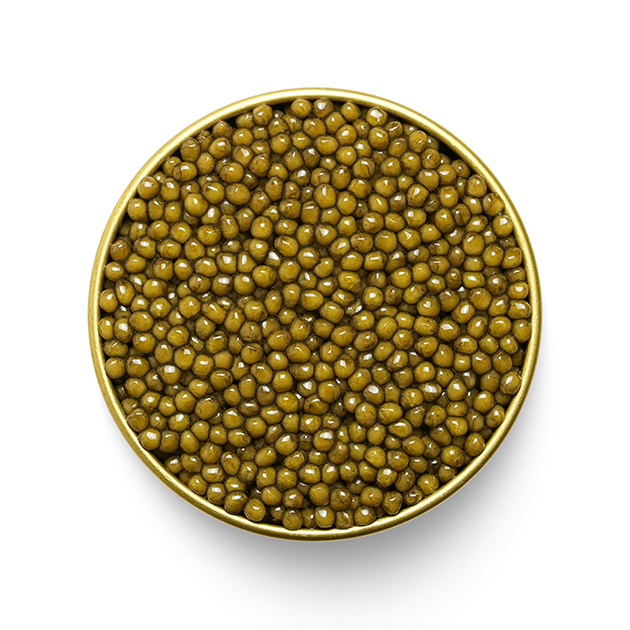

Osetra Caviar: The eggs of Osetra are smaller than that of Beluga and they vary in color from golden-brown to greenish to grey. The quantity of product bought by Osetra caviar lovers is usually a bit more modest than Beluga caviar fans, as Osetra has a very special taste—slightly intense, with the slight flavor of the sea and seaweed. Nevertheless, many people consider it to be the finest-tasting caviar of all because it is delicious on its own, without any additions or garnishes.
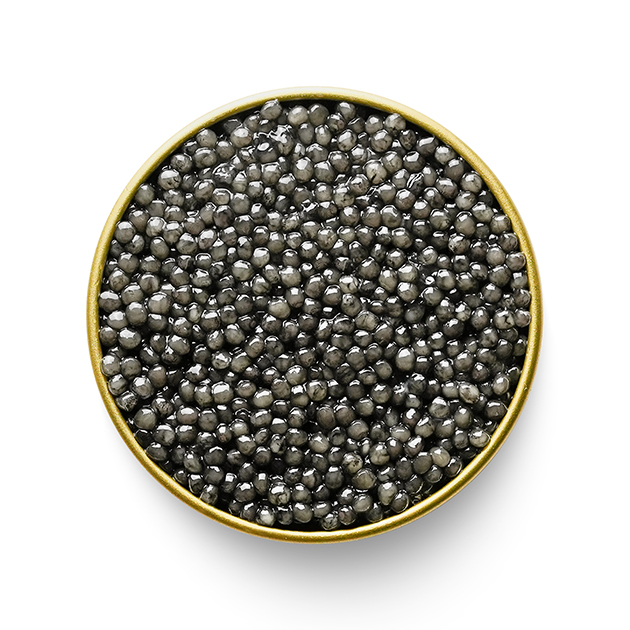

Sevruga Caviar: The eggs of Sevruga are small and black due to it being one of the smaller sturgeon species. Although its nutritional value is not as high as that of Beluga and Osetra caviar, Sevruga caviar has a wonderful, sharp and slightly intense flavor and a delicate aroma. The exterior of Sevruga eggs is a bit stronger than that of Beluga eggs, but this does not detract from the advantages of Sevruga caviar. It is best served in a caviar server surrounded by ice.
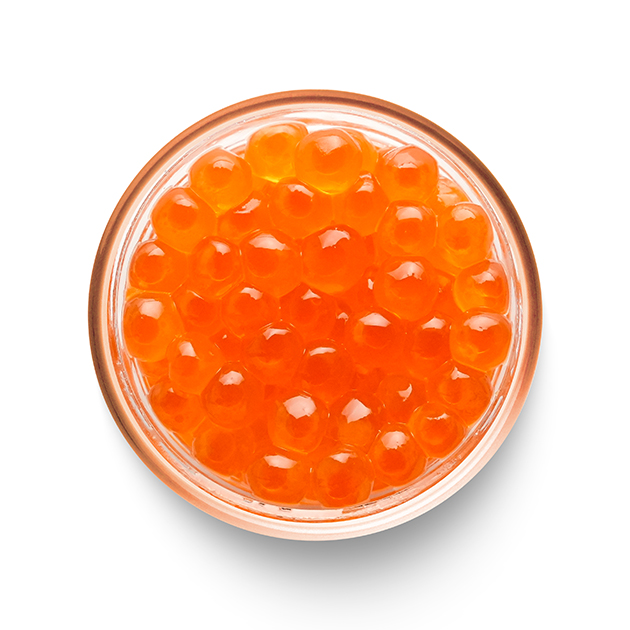

Salmon Roe: The eggs of Salmon are so unusually colored that some call its large eggs “apricot pearls”. They have a specific, buttery and delicate taste that comes with a mild, fishy flavor. Salmon roe is often served on traditional Russian pancakes called blinis or on toasted, crunchy bread with butter.
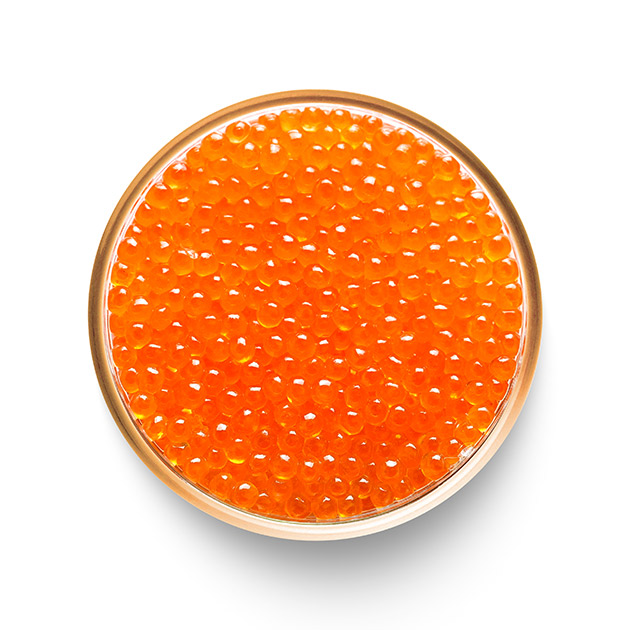

Trout Roe: This fish has slight pink or golden orange eggs of medium size. They can be distinguished by their vivid, salty aroma and taste. Trout roe is very sticky, but this characteristic is not particularly noticeable when served on canapés or sandwiches. Since Trout roe is usually considered too salty to be eaten on its own, this caviar is excellent as an ingredient in a variety of dishes that contain cream products, such as cream cheese, sour cream, and even mayonnaise.
APPRECIATING THE FLAVOR OF CAVIAR
Eating caviar should leave you feeling satisfied and happy, and the best way to do it is the right way. Know how to get the best out of every bite of your specific kind of caviar, and you’re guaranteed to enjoy it and crave more!
Bon appétit!
Did you know that Marky's has a boutique in New York City's Grand Central Market? The small but well-stocked counter offers customers the chance to purchase premium sturgeon caviar (including Beluga) and other fish roes alongside items like smoked salmon, foie gras or truffle delicacies, and more. If you're in the area and craving some indulgent treats, be sure to give us a visit!



